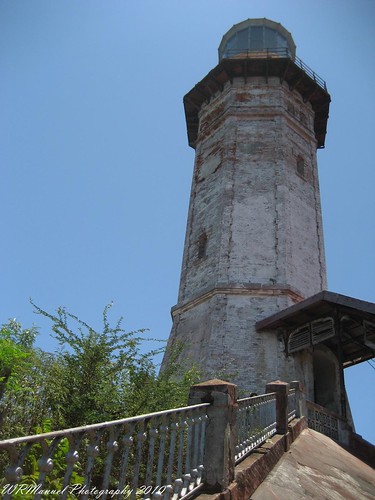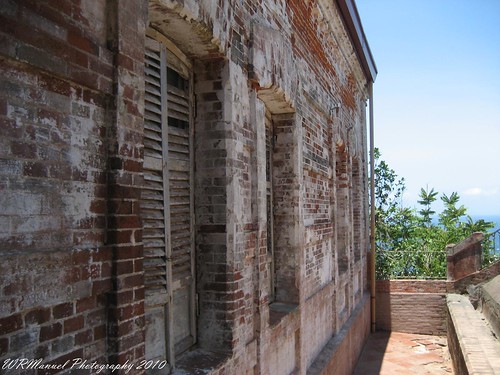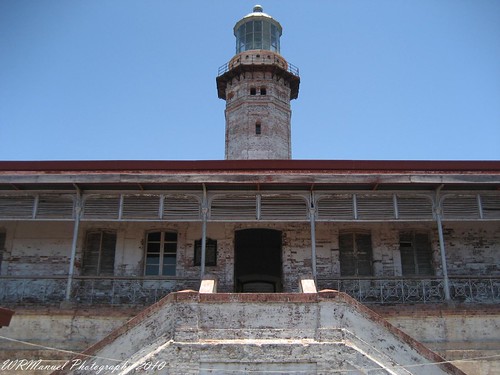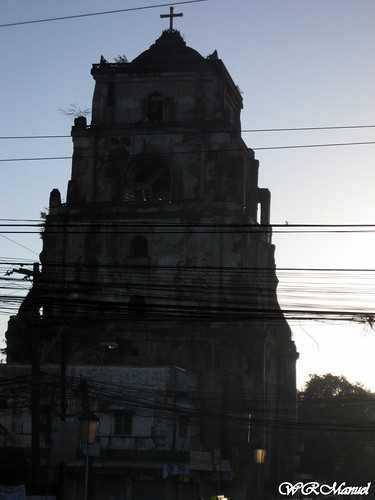Faro de Cabo Bojeador was my second lighthouse. My first visit to this Faro unexpectedly didn’t go well. The experience was so distressful that it was even featured in a local television show. But hey, as the saying goes, there is always a second time! I made the better decision this time by bringing along friends with me.
Specifics
Faro de Cabo Bojeador is the most western of the sentinels on the northern coast of the island of Luzon. It lights the bend separating the West Philippine Sea and the Babuyanes Channel. It likewise assists ships heading south towards the ports of Salomangue in Ilocos Sur and Curmimao in Ilocos Norte. It also assists ships heading towards the Port of Aparri.
Engineer Magin Pers y Pers completed the design on June 1, 1887. Its initial estimate was Php.39,196.89 (Presyong iPhone 5 lang!). It was first lit on March 30, 1892.
The tower is 16.3 meters high. Built of locally made bricks, the octagonal shaped tower has an inner dimension of two meters and an exterior dimension of three and half meters. The top of the tower supports an overhanging balcony, which is surrounded and supported by decorative metal brackets. The attic, where the cupola and lantern rest, is cynical. It is important to note that Faro de Cabo Bojeador still retains its original cupola and lantern.
The dome supports a ball shaped flue, which emits exhausts from the flame of the original gaslight. The lantern is fitted with a first order Fresnel Lens that is partially intact. As a consequence of the great 1990 earthquake of Luzon, parts of the lens collapsed and the alignment of the mechanism was displaced. The Coast Guard retains the original mechanism of the lighthouse. Such mechanism complies with the basic specification for all first order lighthouses.
The pavilion located below contains three apartments, each provided with separate living and sleeping areas, and two offices. One of the offices, the watch room, which is also believed to be the most haunted, is accessed through the gallery; the other through the connecting hallway. The walls of the pavilion are made of bricks while the partitions are a combination of bricks and wood. Interior doors are square headed and crowned by a grilled calado. The doors are made of narra. Unlike other lighthouses designed in the country, the window designed for Faro de Cabo Bojeador did not conform to the usual tripartite division. Only a ventana glazed by glass and protected by wooden jalousies are provided. The pavilion has been transformed as a museum.
Located at the lowest level of the complex is the service building and the courtyard. At the center of the courtyard is the cistern, which is accessible by a small well. Straddling the courtyard to the east and west are the three kitchens and three storage areas. The main gate of the lighthouse is located in the southern and western flank of the courtyard. A flight of stairs in a “T” formation directs the visitors to the pavilion.
Engineer Magin Pers y Pers completed the design on June 1, 1887. Its initial estimate was Php.39,196.89 (Presyong iPhone 5 lang!). It was first lit on March 30, 1892.
The tower is 16.3 meters high. Built of locally made bricks, the octagonal shaped tower has an inner dimension of two meters and an exterior dimension of three and half meters. The top of the tower supports an overhanging balcony, which is surrounded and supported by decorative metal brackets. The attic, where the cupola and lantern rest, is cynical. It is important to note that Faro de Cabo Bojeador still retains its original cupola and lantern.
The dome supports a ball shaped flue, which emits exhausts from the flame of the original gaslight. The lantern is fitted with a first order Fresnel Lens that is partially intact. As a consequence of the great 1990 earthquake of Luzon, parts of the lens collapsed and the alignment of the mechanism was displaced. The Coast Guard retains the original mechanism of the lighthouse. Such mechanism complies with the basic specification for all first order lighthouses.
The pavilion located below contains three apartments, each provided with separate living and sleeping areas, and two offices. One of the offices, the watch room, which is also believed to be the most haunted, is accessed through the gallery; the other through the connecting hallway. The walls of the pavilion are made of bricks while the partitions are a combination of bricks and wood. Interior doors are square headed and crowned by a grilled calado. The doors are made of narra. Unlike other lighthouses designed in the country, the window designed for Faro de Cabo Bojeador did not conform to the usual tripartite division. Only a ventana glazed by glass and protected by wooden jalousies are provided. The pavilion has been transformed as a museum.
Located at the lowest level of the complex is the service building and the courtyard. At the center of the courtyard is the cistern, which is accessible by a small well. Straddling the courtyard to the east and west are the three kitchens and three storage areas. The main gate of the lighthouse is located in the southern and western flank of the courtyard. A flight of stairs in a “T” formation directs the visitors to the pavilion.
How To Get There
Faro de Cabo Bojeador is regarded as the most accessible lighthouse among all in the Philippines because it is situated in a hill which is just a 3-minute drive from the main highway going to Pagudpud. For those backpacking, it’s just a 15-minute trek encircling the hill. Biking enthusiasts will also find this a good choice of visit since the road leading to the lighthouse is well paved.
If you’re commuting, catch a bus heading to Laoag (Partas, Maria De Leon) or straight to Pagudpud (Florida) where you can request the conductor to drop you over Burgos where the lighthouse is located. If you’re dropping in Laoag, better stay in a hotel there so you can visit all the historic and nice places Southern and Eastern Ilocos Norte has to offer. In downtown Laoag, just hop into a tricycle and ask the driver to bring you to the bus terminal plying to Pagudpud. Back in 2007, the fare for the tricycle ride within the city is Php.7 and the fare to Burgos is Php.60.
Having a road trip up north with your best friends all in one car still tops it all.
If you’re commuting, catch a bus heading to Laoag (Partas, Maria De Leon) or straight to Pagudpud (Florida) where you can request the conductor to drop you over Burgos where the lighthouse is located. If you’re dropping in Laoag, better stay in a hotel there so you can visit all the historic and nice places Southern and Eastern Ilocos Norte has to offer. In downtown Laoag, just hop into a tricycle and ask the driver to bring you to the bus terminal plying to Pagudpud. Back in 2007, the fare for the tricycle ride within the city is Php.7 and the fare to Burgos is Php.60.
Having a road trip up north with your best friends all in one car still tops it all.
Best Time to Visit
The keeper suggested that the lighthouse is open to tourists in the morning and in the afternoon but warned us that he wouldn’t advise anyone to visit beyond 6:00PM because “weird things” happen. These “weird things” were well documented in Halloween specials.
Some serious photographers consider doing night shots of Cape Bojeador Lighthouse. However, I am yet to see a night photograph shot within its compound. All I saw were evening shots, zoomed for a star-studded effect, taken by a person positioned at the start of the road connecting the hill to the highway.
Reference:
Manuel Maximo L. Noche, Lonely Sentinels of the Sea: The Spanish Lighthouses in the Philippines, (UST Publishing House, 2005)
The keeper suggested that the lighthouse is open to tourists in the morning and in the afternoon but warned us that he wouldn’t advise anyone to visit beyond 6:00PM because “weird things” happen. These “weird things” were well documented in Halloween specials.
Some serious photographers consider doing night shots of Cape Bojeador Lighthouse. However, I am yet to see a night photograph shot within its compound. All I saw were evening shots, zoomed for a star-studded effect, taken by a person positioned at the start of the road connecting the hill to the highway.
Reference:
Manuel Maximo L. Noche, Lonely Sentinels of the Sea: The Spanish Lighthouses in the Philippines, (UST Publishing House, 2005)





